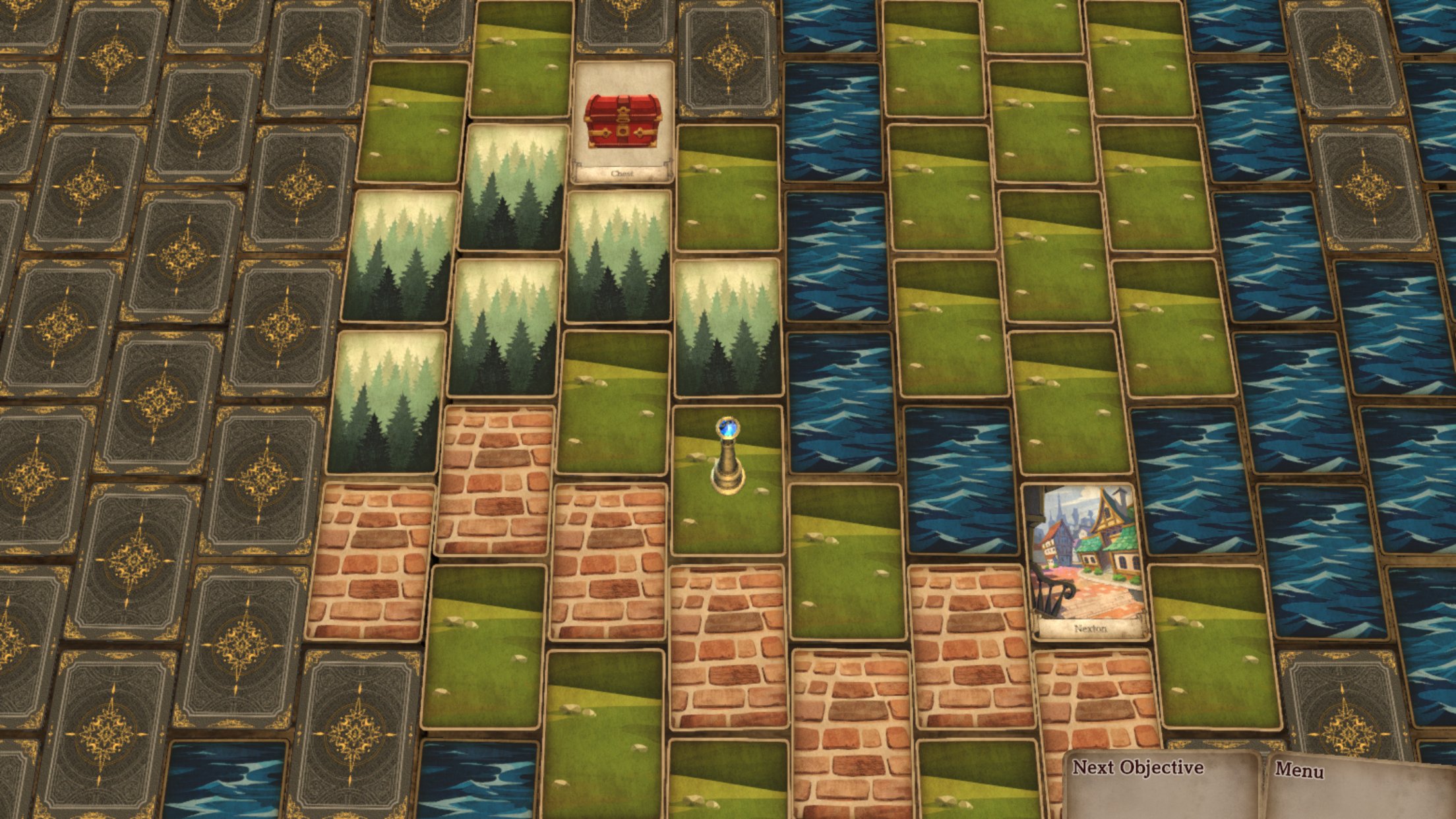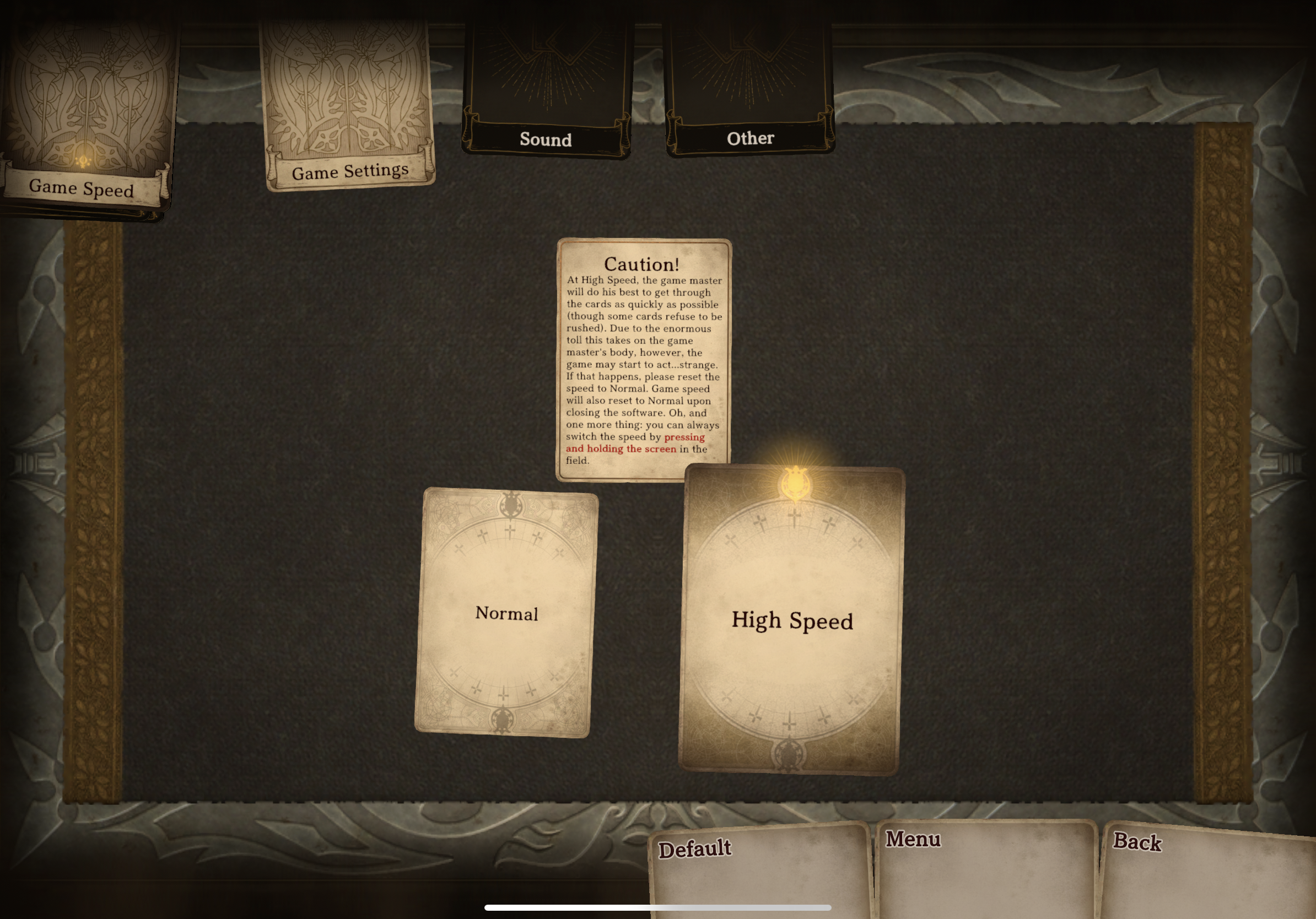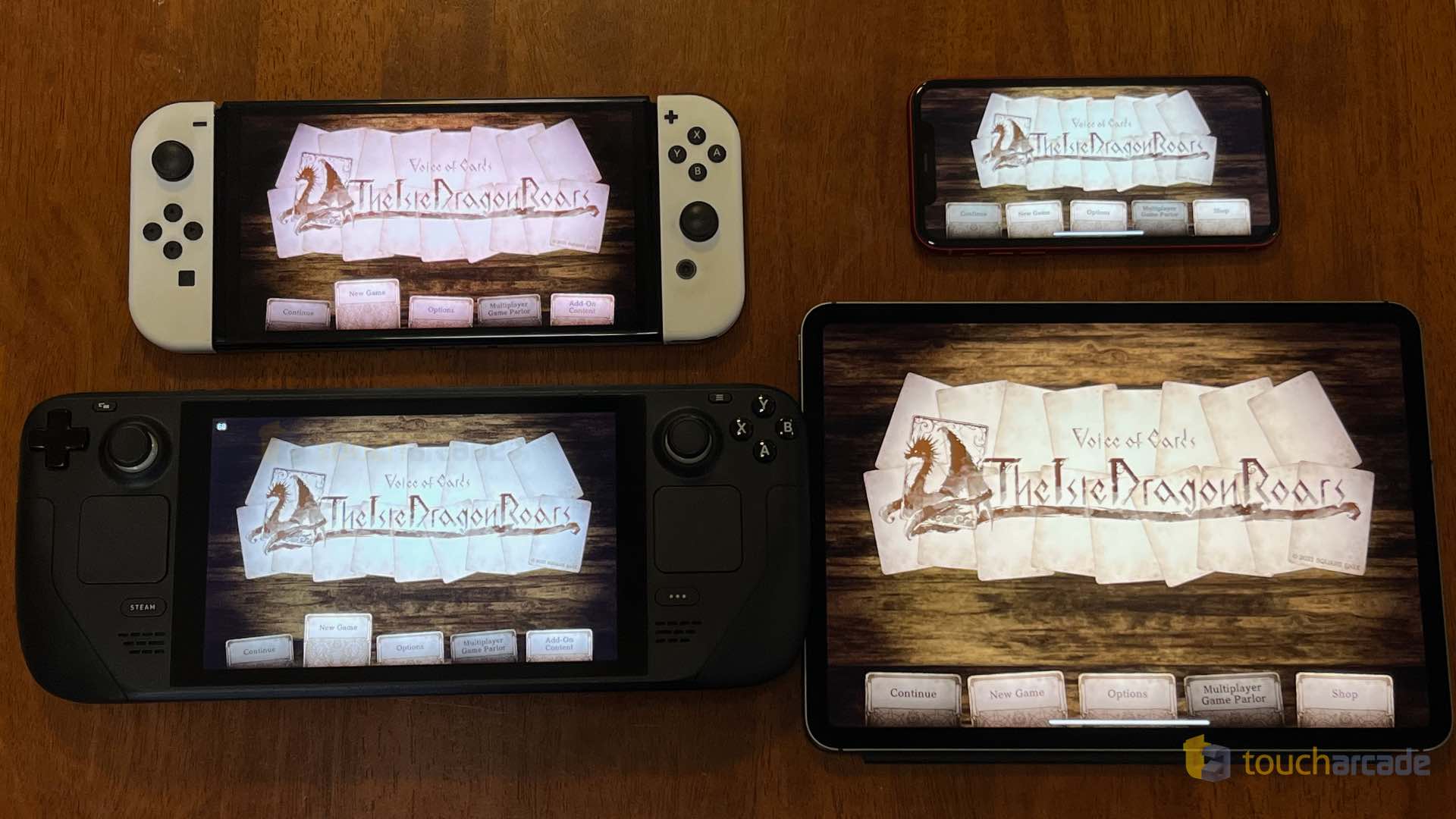In a lot of ways, Voice of Cards: The Isle Dragon Roars back in 2021 felt like the start of Square Enix’s recent experimental phase where the publisher has released multiple smaller scale titles in addition to the usual big RPGs. Last year saw a plethora of those games of varying sizes and quality, but I’d be lying if I said I didn’t enjoy more games in 2022 from the publisher than ever before thanks to the likes of Harvestella and The Centennial Case to name a few. Square Enix also released two Voice of Cards games in 2022 following the series debut back in late 2021 with the Voice of Cards: The Isle Dragon Roars. I had already played and enjoyed it on Nintendo Switch and PC, but have grown to like Voice of Cards: The Isle Dragon Roars more during my time revisiting it since it hit iOS last week.
If you’ve not followed the game at all, Voice of Cards: The Isle Dragon Roars is the first entry in the trilogy, and it is a very straightforward turn-based RPG mechanically, but one that is elevated by its tabletop card game aesthetic. This aesthetic made a lot of people think it is a collectible card game. I call it a card RPG because it isn’t really a deck-building game or a traditional card game, but an RPG that has the aesthetic of a tabletop card game with a gamemaster narrating everything. This setting was originally a detriment to the experience with how slow it made things feel, but a post launch update (included in mobile from the start) allows high speed mode which dramatically improved how I felt about the game.
A lot of the interest in Voice of Cards: The Isle Dragon Roars was because of the key staff involved that Square Enix promoted. While a lot of interest in general was because Yoko Taro (NieR) was involved, playing through this made me a fan of director Maasa Mimura who directed all three games in this trilogy. The original trailer was great, but experiencing Kimihiko Fujisaka’s (Drakengard) art in game is sublime. I enjoy seeing how different developers try to make traditional turn-based combat stay fresh, and this is definitely one of the best ways to make even small encounters look good.
Voice of Cards: The Isle Dragon Roars has its gorgeous card aesthetic, but combat is also where it uses some elements from card games relating to how stats work. The way your resource (gems) generates per turn and how you interact with it feels like the only real element of card games present in the mechanics of the Voice of Cards games. At the default game speed, combat is far too slow with its animations, so I’d recommend using the high speed mode when possible.

Voice of Cards: The Isle Dragon Roars has a dragon returning after being defeated a long time ago. The queen is looking for adventurers to take on said dragon, and this is where your adventure begins featuring a standard RPG story, but one with some nice twists. It will take you about 12 or so hours to finish. Don’t expect it to be challenging until one specific boss. It is a very chill experience overall thanks to the music and aesthetic.
When I first played Voice of Cards: The Isle Dragon Roars on Nintendo Switch, I was glad to see Square Enix and developer Alim add touchscreen support. It made me wonder when we’d see an iOS version. A year and a half later, Voice of Cards: The Isle Dragon Roars has hit mobile, and the iOS version controls great. The touchscreen controls on Switch always felt like a much better experience than the button controls. On iOS, there is no controller support. I tried my DualSense and 8bitDo with no luck during testing. I wouldn’t play this with a controller on iPad, but I wanted to check if Square Enix had added controller support here. Speaking of features not present, Voice of Cards: The Isle Dragon Roars does not have iCloud save support. I tried across two different accounts and four devices.

Despite being a paid game, Voice of Cards: The Isle Dragon Roars includes paid DLC. These are optional cosmetics and background music options. Considering this is priced at a third nearly of what it costs on other platforms, I don’t see a problem with optional DLC. I even own this DLC on Steam, and find it worth the price, but I really wouldn’t want to change the great soundtrack to Voice of Cards: The Isle Dragon Roars even if the DLC lets you use amazing NieR music in the case of this game. The cosmetic DLC looks good as well, but I don’t think it is worth getting. The base game purchase is great on its own.
In terms of visuals, Voice of Cards: The Isle Dragon Roars on iOS misses nothing from the other platforms. It looks excellent, especially on iPad, and is one of my favorite card game aesthetics. Performance is where I am let down by Voice of Cards: The Isle Dragon Roars on iOS. I was hoping to see it run at 60fps like the PC and PS4 versions, but it isn’t as smooth. It also has slightly longer load times than I expected.
Barring seemingly not having iCloud save support and the lower than expected frame rate, my big issue with the Voice of Cards: The Isle Dragon Roars iOS port is the online check on launch. There’s no need for a game like this to have online DRM on iOS. If this has to do with the DLC, Square Enix can implement an offline check. I hope an update in the future can remove this.

The music of Voice of Cards: The Isle Dragon Roars is excellent, and feels like a blend of Celtic melodies and NieR. It has vocal tracks, more melancholic songs, more. Just like the game itself, the music from Shotaro Seo, Oliver Good, and Keiichi Okabe is worth your time. While the promotional trailers featured music you’d expect from Keiichi Okabe, I’m very impressed with the songs composed by both Shotaro Seo and Oliver Good at least going by the composer credits on the iTunes soundtrack I bought. Voice of Cards: The Isle Dragon Roars features dual audio, and both gamemaster narration options are well done.
If you aren’t sure if you will enjoy Voice of Cards: The Isle Dragon Roars or if you’re already sold on it, I’d recommend grabbing the free Voice of Cards: The Isle Dragon Roars Chapter 0 Demo on iOS and Android. This serves as not just a free demo, but also a prologue to the events of Voice of Cards: The Isle Dragon Roars. On consoles and PC, this is titled Voice of Cards: The Isle Dragon Roars Demo. It will give you a good idea of what to expect visually and mechanically. Keep in mind that the high speed option is not present in this demo / Chapter 0 release.

Having now tested Voice of Cards: The Isle Dragon Roars on PC, Steam Deck, PS5 (through the PS4 demo) iPhone, iPad, and Nintendo Switch (docked and handheld), my favorite ways to play it are definitely iPad and Switch. Despite both offering a lower frame rate than Steam Deck, proper touch controls and better screens make the decision simple in a game like this. While it does look very nice on the big screen on PS4 or PC, Voice of Cards: The Isle Dragon Roars feels like a game book you’re experiencing with lovely narration, and I enjoyed it more as a handheld and portable experience. Some of the text is a bit small on iPhone though, which is why I recommend it more on iPad or a larger screen iPhone if you have that option.
Voice of Cards: The Isle Dragon Roars is a polished albeit straightforward RPG with a gorgeous aesthetic and amazing music. Despite a few issues with the port, I definitely recommend checking it out on mobile. It is a bit of a harder sell on iPhone, but the iPad and Switch versions are my favorite ways to experience Voice of Cards: The Isle Dragon Roars.
